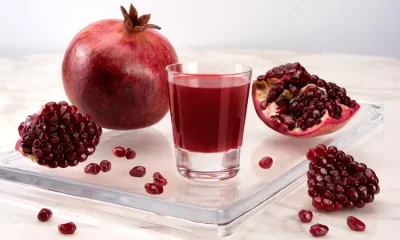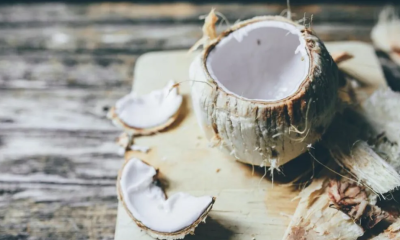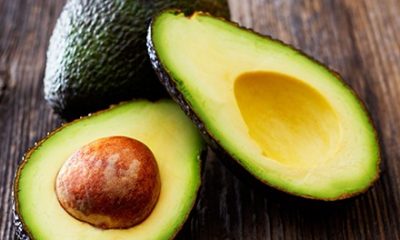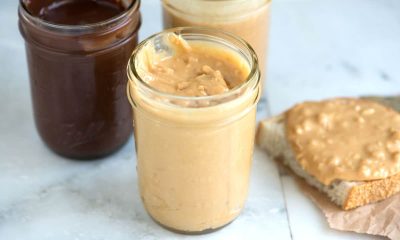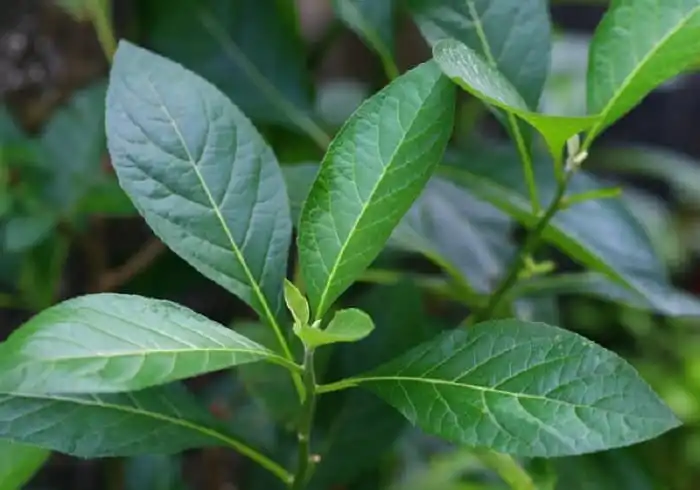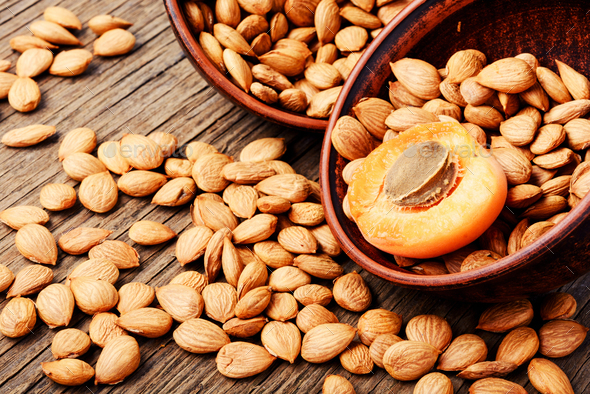Food
6 Benefits of ugli fruit and side effects

Table of Contents
Discover the 6 shocking health benefits of Ugli fruit and side effects.
It doesn’t seem very nice to name a fruit based on its appearance, but this time I’m going to let you slide the benefits of ugli fruit because this unappealing fruit is ugly on the surface.
The Ugli fruit is a cross-bred fruit found in a tropical climate and is an incredible source of vitamin C, fiber, and other nutrients, such as pectin and coumarin.
It has only been around for the last 100 years, but in that time it has developed a very specific reputation for a unique, sweet yet tangy taste.
Technically, the ugli fruit is the Jamaican form of tangelo, which is generally a breed of mandarin and grapefruit.
So, don’t let the outward appearance fool you, the ugli fruit is worth it. Why? Because the ugli fruit has beautiful health benefits, such as helping you lose weight, boost immunity, and support the heart, among others.
Health benefits of Ugli fruit
Ugli fruit has a low-calorie count per serving and contains no carbohydrates or fat, making it a no-brainer for those trying to lose weight, along with a balanced diet and exercise routine.
It’s not just the low-calorie count of this fruit that helps. The presence of fiber in ugli fruit is also a key in weight loss; high fiber diets are essential for maintaining a healthy weight or losing weight, if necessary.
One reason for this is that fiber helps you feel full for a longer period after eating, so you can wait longer to eat again without immediately feeling hungry.
High fiber intake can also decrease the absorption of toxins in the intestine and improve the secretion of hormones in the digestive tract.
There is a type of fiber found specifically in citrus fruits, known as pectin, that has several proven benefits, including aiding weight loss.
In one study, pectin was found to reduce appetite, improve satiety, and give participants energy when they ingested even a small amount.
2.- Improves the function of the immune system
Like most citrus fruits, ugli fruit is a great source of antioxidants, including (but not limited to) vitamin C.
Antioxidants are important nutrients because they fight the damage that excess free radicals can cause the body. Unfortunately, the Western lifestyle and diet provide unnaturally high exposure to free radicals that cause oxidative stress in the body.
Mutations and diseases caused by free radicals include the big killers like cancer, heart disease, stroke, and many others.
Rather, consuming antioxidant-rich foods, such as green leafy vegetables, fruits, and teas, regularly provides your body with the defenses it needs to function the way it was designed to function. Remember, your body is meant to fight disease.
Vitamin C is a very popular antioxidant, and with 70 percent of the recommended daily value in just half an ugli fruit, you are sure to reap the benefits of eating ugli fruit regularly by seeing an increase in your immune function.
Vitamin C stimulates the production of white blood cells in the bloodstream while protecting them from oxidation.
The ugli fruit also contains 8 percent of the recommended daily intake of dietary fiber per serving.
Fiber is important to many of your body’s systems, including the immune system; When you eat enough fiber, your gut is properly “clumped” and can flush carcinogens and other toxins from your system, as well as prolong stomach emptying and increase the percentage of nutrients absorbed by your system.
Because most of your immune system is located within your gut, intestinal health is closely related to a strong level of immunity to illness and disease.
A study focused on ovarian cancer found that high fiber intake can contribute to a decreased risk of cancer.
Fiber is also responsible for strengthening the walls of the colon, which also contributes to immune health.
The pectin in citrus fruits can also help relieve diarrhea, which negatively affects the digestive system and immune reactions.
3.- Helps fight diabetes
Because ugli fruit is a low-calorie food that contains zero grams of fat or cholesterol, it ranks low on the glycemic index scale.
While a diet rich in low-glycemic foods doesn’t help with weight loss, according to long-term research, low-GI foods are important in treating diabetes.
The presence of fiber in ugli fruit also helps maintain healthy blood sugar levels.
Another way that ugli fruit can help fight diabetes is the presence of citrus pectin that I mentioned earlier.
One study suggested that the pectin found specifically in citrus fruits may help relieve the symptoms of type II diabetes.
This is likely because pectin decreases the activity of enzymes that break down starches and sugar in the digestive system, helps protect against blood sugar spikes, and decreases the absorption of sugar and carbohydrates.
4.- Good for the heart
The benefits of the fruit Ugli also has several benefits to protect the heart from disease or abnormal functions, due in part to its high antioxidant load.
In addition, the presence of pectin and fiber also supports the health of the cardiovascular system.
Pectin has been shown to lower cholesterol levels specifically in those at risk for coronary artery disease when introduced into the diet without any other changes in diet or routine.
Cholesterol levels are closely related to the occurrence of heart disease, so it is important to maintain healthy cholesterol levels to protect the heart from future disease.
A high fiber diet is also associated with a reduced risk of heart disease. Fiber is associated with a regulated cholesterol and triglyceride level in the blood.
The steeper the fiber intake, the less likely a person is at risk for developing hypertension and other heart disease factors, including metabolic syndrome.
This is the reason why the Mediterranean population has such a low rate of heart disease compared to Westerners.
5.- It can reduce the risk of cancer
There are rarely healthy foods that do not affect cancer risk in some way. This is because foods with positive nutrient content increase your body’s ability to fight disease, while the typical American diet contains most of the foods that do the opposite.
Cancer is simply a collection of damaged cells coming together, and that is why I am a firm believer in using natural cancer treatments instead of dangerous chemotherapy drugs.
In addition to its cancer-fighting antioxidants, ugli fruit also contains other nutrients that are known to protect against cancer.
For one thing, pectin causes apoptosis (programmed cell death) in colon cancer cells under certain conditions and can be a useful addition to a diet designed to help the body fight colon cancer.
The Ugli fruit also contains coumarin, a chemical compound found naturally in many different types of plants.
Coumarin has been studied more recently as an alternative to traditional chemotherapy drugs, which have a long list of abominable side effects and problems with multi-drug resistance (when the body can no longer process certain pharmaceutical substances correctly).
On the other hand, coumarin is a substance of plant origin with practically no side effects and no drug resistance problems.
Coumarin is a hot topic in the cancer research world right now because it has an obvious impact on a wide variety of cancer types through several mechanisms of action, not just one.
Another common class of nutrients in fruits, including ugli fruits, is a terpene. This grand classification of organic compounds serves various purposes in different body systems, including as “biosynthetic building blocks in almost all living creatures.” Terpenes found in citrus fruits in particular have shown promise in reducing breast and pancreatic malignancies.
6.- Useful to dissolve kidney stones and gallstones
The terpenes in ugli fruit that can fight cancer are the same ones that show the possibility of dissolving gallstones and kidney stones.
One of them in particular, known as limonene, has been used for this purpose in Japan for some time.
Nutrition facts of ugli fruit
The Ugli fruit contains some of the amazing nutritional benefits of its three “parent” fruits, and even improves on one of them, but I’ll get into that later.
A serving of ugli fruit (½ fruit, about 122 grams) contains approximately:
• 45 calories
• 11 grams of carbohydrates
• 1 gram of protein
• 2 grams of fiber
• 42 milligrams of vitamin C (70 percent DV)
• 20 milligrams calcium (2 percent DV)
Like all fruits, ugli fruits also contain amazing antioxidants (in addition to vitamin C) and other important nutrients.
The ugli fruit is nutritionally closer to the orange, although the two are not identical. Oranges yield more calories per serving, but they also contain more fiber and sugar.
They also double the ugli fruit in the presence of vitamin C. In general, while ugli fruits are nutritionally valuable, regular oranges offer similar (sometimes) better nutritional content.
However, nobody wants to eat the same thing every day, right? Ugli fruits offer a different flavor than traditional citrus fruits because they combine more than one flavor and are a fun fruit to introduce into your diet.
Side effects of ugli fruit
As with any food, you may be allergic to ugli fruit, although no medical cases of a fruit allergy have been reported.
If you experience any kind of inflammatory side effects like mouth swelling or hives, stop eating ugli fruit immediately and see your doctor.
One important thing to note is that while ugli is a variety that comes in part from grapefruit, it does not have the same medicinal interactions that are found with grapefruit.
Grapefruit limits the activity of an enzyme responsible for breaking down drugs within the body, increasing the levels that remain in the body and increasing side effects and negative interactions.
However, if you are prohibited from eating grapefruit due to these interactions, it should be safe for you to eat ugli fruit.
What is ugli fruit?
The Ugli fruit is the Jamaican variation of the tangelo, which was originally experienced in the late 1800s.
However, the exact variation of the ugli fruit was not found until 1917 when a farm owner named GGR Sharp discovered it on his land.
He subsequently pollinated the plant, using the cultivars containing the least amount of seeds, and began exporting the plants in the 1930s to England and Canada, then expanded to New York in 1942.
How to select and eat Ugli fruit
Before they ripen, ugli fruits have yellowish-green skin. However, most varieties turn orange as they mature, although some end up bright yellow or green when ripe.
When choosing ugli fruit at your local market, be sure to look for any drying around the belly button and only choose the ones that do not have dry skin.
There should be some elasticity in the skin under slight pressure, and small dents are common.
Due to the color differences involved in growing ugli fruit, color should not be a consideration when choosing an individual fruit.
The most common way to eat ugli fruit is similar to how you can eat a grapefruit, cutting it in half and using a spoon to remove it from the skin.
It competes with grapefruit in size, sometimes topping it by a small margin. Ugli fruit is generally sweet enough to eat without added sweetener, as it tends more to the sweet side of the orange versus the tangerine.
Ugli fruit is considered to be in season between November and April of each year and is generally available in most fresh fruit markets around the world during that season.
How to eat ugli fruit
You can eat ugli fruit in more ways than one. If you are interested in adding sweet fruit to your morning smoothie, you can try an Ugli fruit smoothie that will give you a boost of antioxidants and potassium along with delicious flavor.
For a fresh salad with an ugli addition, you can add any kind of variation you like, and it’s sure to delight.
Final thoughts on the benefits of Ugli fruit
• The Ugli fruit is a creole combination of orange, grapefruit, and mandarin.
• It is produced only in Jamaica and is exported to the rest of the world during the “in season” months of November to April.
• The Ugli fruit contains large amounts of vitamin C and fiber in each serving.
• The various benefits of this fruit include a weight loss aid, cancer-fighting nutrients, protection against diabetes and heart disease, and the dissolution of gallstones and kidney stones.
• The Ugli fruit has only been around for around 100 years.
• There are no known side effects of the ugli fruit, and it does not have the same drug interactions that grapefruit is known to have.
-

 Food5 months ago
Food5 months ago10 + Benefits of carrot juice and side effects
-

 Food5 months ago
Food5 months ago8 shocking benefits of leek juice and side effects
-

 Health5 months ago
Health5 months agoBenefits of guava leaves Sensually
-

 Health5 months ago
Health5 months ago10 shocking health benefits of Canary seed milk
-

 Health5 months ago
Health5 months ago7 health benefits of cashew leaves and side effects
-

 Health5 months ago
Health5 months ago13 shocking health benefits of Thai eggplant
-

 Weight Loss5 months ago
Weight Loss5 months agoKelly Osbourne weight loss 2022
-
Weight Loss5 months ago
Chrissy Metz Weight Loss Secret (2022)

